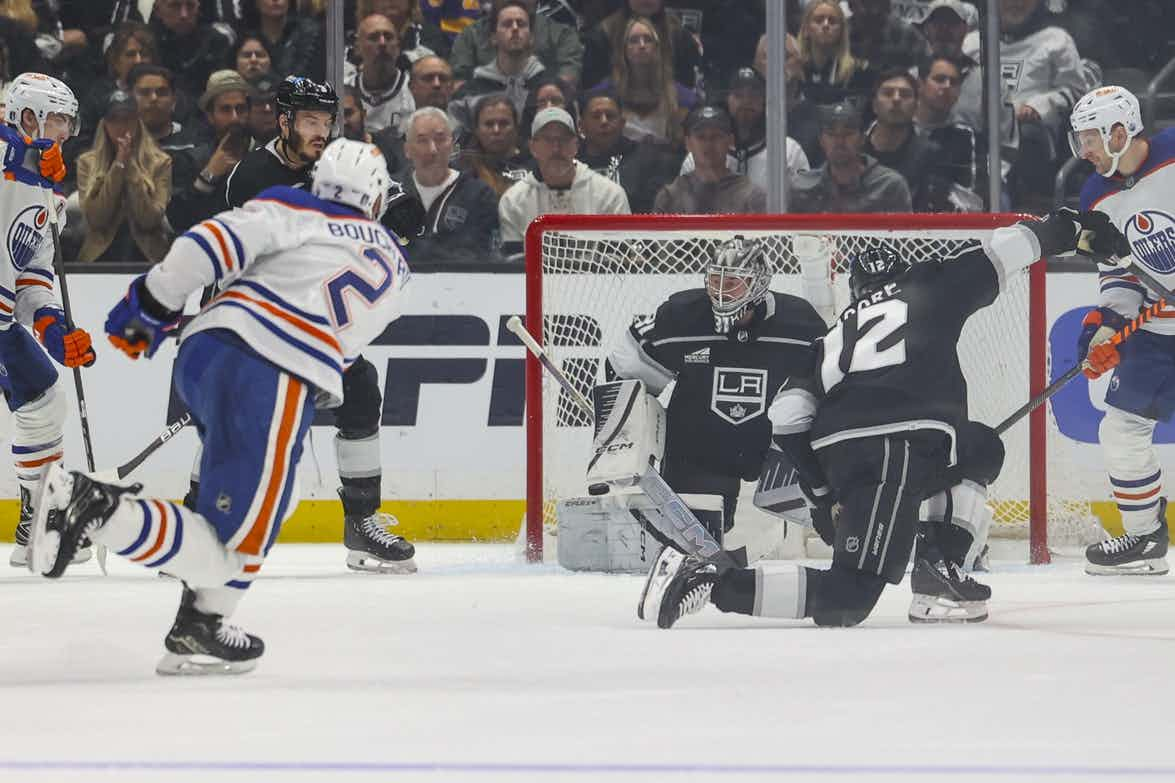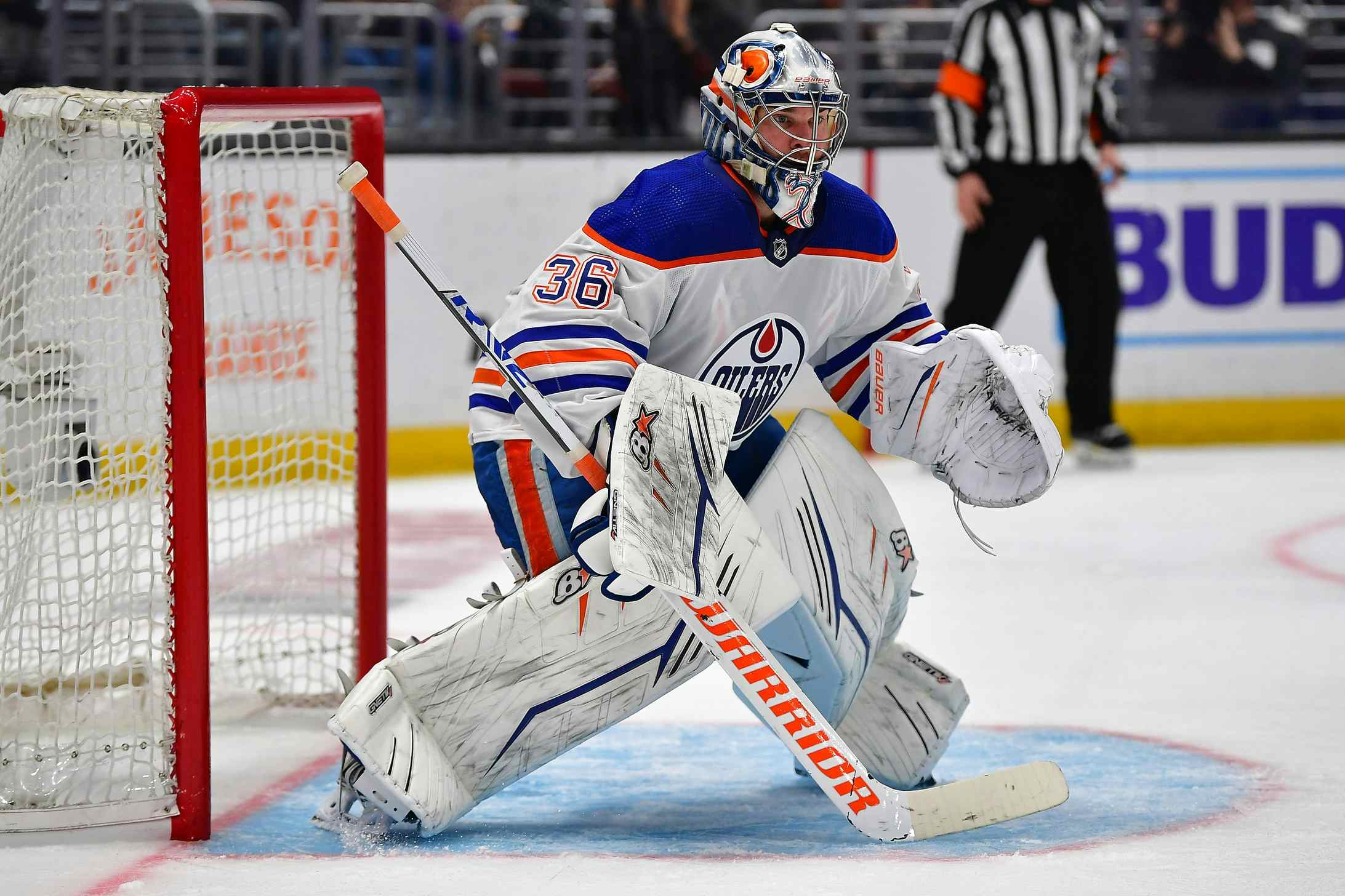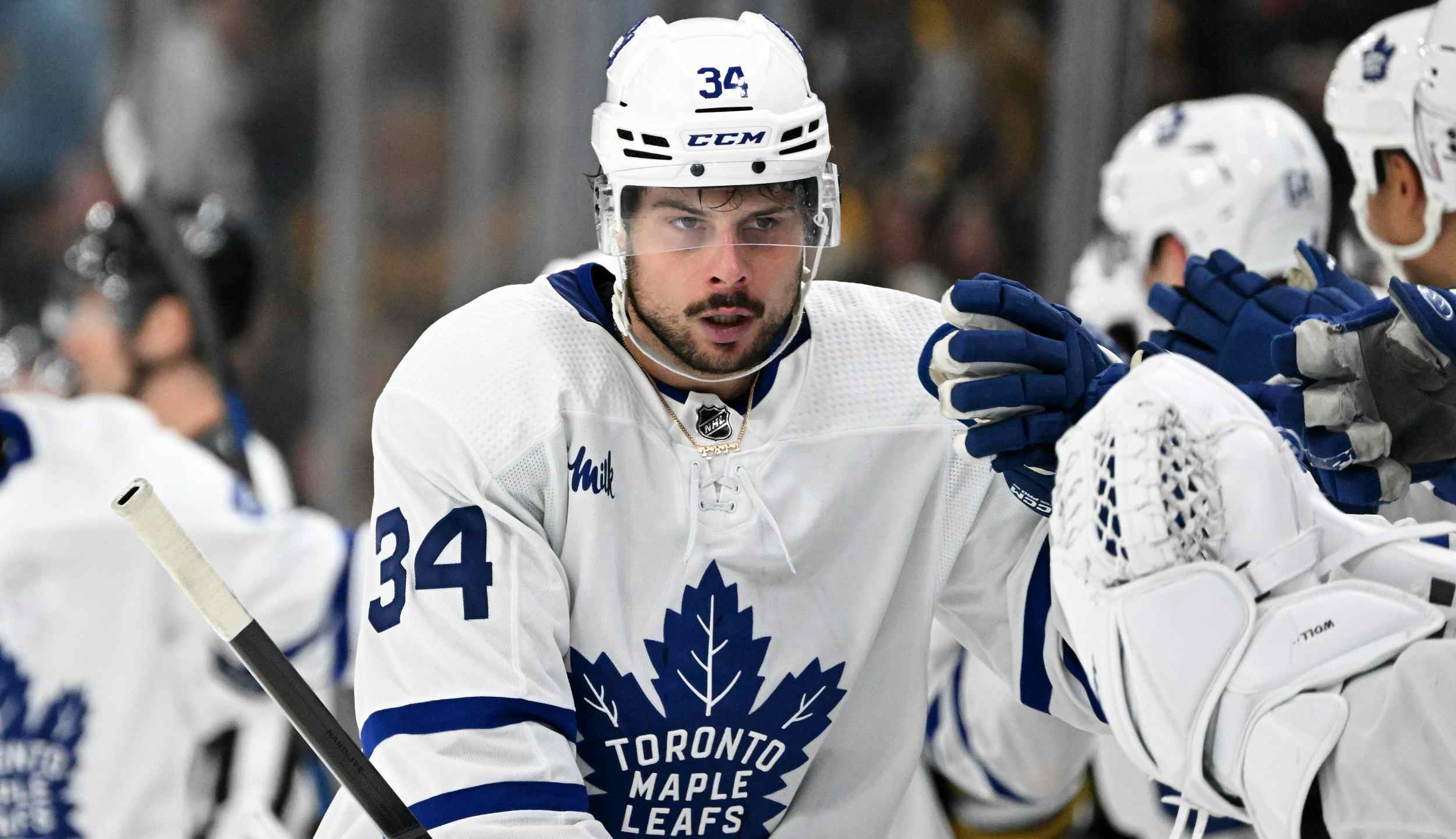Team Review: Doug Risebrough Style
I don’t know how many OilersNation readers follow the official Hockey Operations blog of the Minnesota Wild. I’d guess the answer is not many.
In any case I do, because Minnesota has some of the most compelling online content available at any of the official sites. The Hockey Operations blog has pieces written by the general manager and members of the hockey staff, and while they don’t reveal everything, what they do reveal is generally worth reading. Take the team review that Doug Risebrough published last week.
Risebrough’s a career hockey man -– he’s been the GM in Minnesota since the team entered the league, and had a long career with Calgary and Montreal (winning four Stanley Cups with the powerhouse Canadiens team of the late-70s). He became an assistant coach in Calgary after retiring, and would subsequently take the role of Head Coach and then General Manager. As GM of the Flames, he was fairly unsuccessful; Calgary never made it past the first round of the playoffs during his tenure, and he was on the wrong end of the massive Doug Gilmour trade with Toronto. His history with the Oilers has been mixed; as a player, Legends of Hockey relates this anecdote:
Risebrough was especially good at playing the agitator. He was a chippy, hard-nosed, aggressive pest known for his two-handers and ability to pot his share of points. He once threw an Edmonton Oilers sweater on the ice and shredded it with his skates.
After getting fired in Calgary, Risebrough spent three seasons (1996-99) in the Oilers organization as VP of Hockey Operations before taking the job in Minnesota.
Since Risebrough’s obviously a bright guy, and made his team review public, I thought it might be of interest to review the Edmonton Oilers in the same manner (with the only change being that instead of posting last year’s record at the all-star break, I’ve pro-rated the numbers from all of last season). Last year’s numbers are italicized.
2007-08 | 2008-09Record: 23-20-3 | 24-19-3Points: 49 | 51WC Standings: 9th | 6thGoals For: 132 | 132Goals Against: 141 | 138Goal Differential: -9 | -6Goals For Rank: 17th | 14thGoals Against Rank: 26th | 23rdPowerplay: 21st | 17thPenalty Kill: 5th | 28thES Scoring: 27th | 12th
The record this season is nearly identical to last year’s pro-rated record, with a two-point shift resulting in a three-spot move in the conference standings, but the way that it’s happening has shifted dramatically.
On the surface, goals for and against are nearly identical to last season, but the reasons for the performance could not be more different. Last season, the Oilers were among the worst even-strength teams in the NHL. They’ve moved up fifteen spots in even-strength scoring (for and against). The power-play has experienced modest improvement, going from 21st in the NHL to 17th.
Still, despite all of these improvements, the team is running in place, and it only takes a look at one number to explain why. The penalty-kill, which has been a great strength on virtually every team of the Lowe/MacTavish era, has been a disaster. Let’s take a closer look at the penalty-kill statistics for this season and last season.
2007-08 | 2008-09Percentage: 84.7% | 76.3%Times Shorthanded: 206 | 198Times SH Rank: 21st | 16thGoals Against: 31 | 47Goals Against Rank: T-7th | T-25th
The Oilers aren’t an especially disciplined team, but they’ve made some modest improvements in that department from last season. Despite being shorthanded eight fewer times, they’ve allowed 16 more goals.
Let’s compare the performances of this season’s most used players to their counterparts last season, starting with the forwards:
All Numbers/60: TOI | GA | Corsi | BlocksOn2007-08Reasoner: 3.10 | 4.49 | -49.4 | 23.6Moreau: 2.78 | 5.17 | -58.6 | 14.7Stoll: 2.67 | 6.92 | -66.7 | 20.8Horcoff: 2.54 | 5.79 | -63.2 | 22.7Brodziak: 2.49 | 4.82 | -48.2 | 23.2Pisani: 2.45 | 5.24 | -55.9 | 14.42008-09 — — — —Horcoff: 3.08 | 9.08 | -99.5 | 22.5Brodziak: 2.79 | 7.50 | -74.5 | 19.0Moreau: 2.60 | 11.54 | -86.6 | 19.4Pisani: 2.24 | 1.79 | -98.3 | 16.1Reddox: 1.06 | 9.88 | -103.7 | 29.6Cole: 1.05 | 1.26 | -73.3 | 26.5Cogliano: 0.97 | 6.89 | -81.3 | 16.5Penner: 0.94 | 8.86 | -104.9 | 25.1
Looking at the Time On Ice numbers, there’s been a difference of approach this season. Last season, MacTavish had six forwards that he used a lot when they were healthy, which meant that most of the season he was running with two pairs of forwards (because most of the players on that list had significant injuries over the course of the year).
This season, the plan seems to have been to use Horcoff-Brodziak and Moreau-Pisani, but with Pisani’s injury the second set of forwards has seen a mixed bag of players with Moreau, with four players all hovering around the 1:00/60 mark.
The negative Corsi number has shot up between this year and last by a tremendous amount. Some of that is due to rule changes (the negative Corsi number for teams across the league has increased), but much of it is a result of allowing more shots. Brodziak and Cole stand out as players doing a fine job at reducing the number of shots against, while Ethan Moreau would seem to be doing a decent job despite the amount of goals being scored on his watch.
It’s been suggested that this year’s unit blocks fewer shots than last season’s, and while superficially the total number of blocks looks close, it really isn’t. The block totals from last season came on far fewer shots; in other words, the percentage of shots being blocked has dropped. Using Horcoff as an example, last season 63.2 more attempts (shots, missed shots and blocked shots) were made against than for, with an average of one block per every -2.8 Corsi. This season, he’s averaging one block per every -4.42 Corsi.
If we use a weighted (for ice-time) average down the line, we get the following ratios for this season and last season:
2007-08: .36 Blocks/ -Corsi
2008-09: .23 Blocks/ -Corsi
In simpler terms, this set of forwards is about 33 per cent less likely to block a shot than last year’s set of forwards.
To sum up, I see two significant weak spots among the forwards on this year’s penalty-killing unit:
- Allowing far too many shots against
- A decreased willingness to block shots
Personnel would seem to be part of the problem; Marty Reasoner was the best player on last year’s team (and among the best in the league) both in allowing fewer chances against, and in being willing to block shots he faced. The decision to let him walk as a free agent over the summer was a mistake. Jarret Stoll on the other hand, was among the worst players on last year’s unit in both categories, so it would seem reasonable to conclude that his absence isn’t one of the primary factors in the decreased efficiency of the penalty kill.
Without knowing what’s happening behind the scenes, it isn’t possible to conclusively say that coaching is part of the problem, but the numbers would seem to indicate that a greater emphasis on shot-blocking (historically a strength for MacTavish-coached teams) would help the penalty-killing unit.
All Numbers/60: TOI | GA | Corsi | BlocksOn2007-08 — — — —Souray: 3.77 | 3.68 | -44.7 | 25.1Staios: 3.71 | 4.15 | -52.9 | 19.9Greene: 2.54 | 7.20 | -65.3 | 20.6Gilbert: 2.40 | 4.88 | -58.0 | 21.1Smid: 2.30 | 6.03 | -64.7 | 20.9Pitkanen: 1.93 | 3.94 | -57.2 | 19.2Grebeshkov: 1.13 | 8.96 | -51.5 | 23.12008-09 — — — —Staios: 3.52 | 8.71 | -93.0 | 19.4Souray: 3.45 | 7.91 | -89.3 | 22.1Gilbert: 2.48 | 8.05 | -87.0 | 22.0Grebeshkov: 1.89 | 6.06 | -86.4 | 22.0Strudwick: 1.36 | 7.35 | -102.9 | 27.0Smid: 0.91 | 8.21 | -69.8 | 14.4
A quick glance at these numbers would seem to indicate that the same problems observed among the forwards are also prevalent among the defense. Since the numbers are team numbers, that isn’t surprising. There’s also some difficulty with sample size; a much greater percentage of the game is played at even-strength than on the penalty-kill, so the numbers are inherently weaker.
With those caveats, however, the loss of Matt Greene would appear to have limited impact. Greene was the worst defender used last season in goals against, negative Corsi, and blocks per negative Corsi.
It is worth noting that the most used defenceman on the PK this season, Steve Staios, has the worst goals against average of any defenceman, and also has the lowest number of blocks per negative Corsi. His Corsi number is better only than the little-used Jason Strudwick. Last season, Staios trailed only Souray among commonly used penalty-killers in these categories. It would seem reasonable to conclude that the drop-off in his play at even-strength from last season to now extends to the penalty-kill as well.
2007-08 SA | GA | SV%Roloson: 157 | 18 | 0.886Garon: 160 | 13 | 0.9192008-09 — — —Roloson: 196 | 24 | 0.878Garon: 109 | 17 | 0.844Deslauriers: 54 | 6 | 0.889
This is the other place where there’s been a huge change in quality. Mathieu Garon last season had a pretty average five-on-five save percentage. On the penalty kill, however, he ranked second in the league among goalies with more than 25 games (behind Dan Ellis of Nashville).
Fast-forward to this season, where Garon’s numbers dropped off the face of the Earth shorthanded. Garon’s even-strength save percentage is actually better than the number he posted last season, but the huge decline in his penalty-killing numbers dropped his save percentage overall. It’s probably worth questioning if Garon’s decline was hurting the penalty-kill, or if the penalty-kill’s decline was hurting Garon –- I’d guess a little of both. Roloson’s save percentage is down a touch from last season short-handed, so I’d imagine that the Oiler brass felt Garon was the bigger piece of that equation, which is the biggest reason he was traded.
In Conclusion
I would suggest that the Oilers would be well-advised to make improving the penalty-kill their chief priority. The trade of Garon would seem to imply that they felt he was a big part of the problem, but even if they’re right about that, they can’t afford to stand pat. I’d suggest the following list of changes:
1. Trade for an elite penalty-killing forward.
This team misses Marty Reasoner a lot, but players of his ilk are generally easy to acquire on the trade market. There isn’t any excuse for failing to upgrade the personnel in that area, and little excuse for allowing Reasoner himself to walk this past summer.
2. Reduce Steve Staios’ level of responsibility.
Staios, one of my personal favourites on this team, has looked shaky for much of this season. Injuries, age, personal situation; whatever the reason for the decline, it’s highly visible five-on-five, and the statistics (and common sense) would seem to indicate that it’s also a cause for concern on the penalty-kill. The reduction in Staios’ ice-time could be accounted for by increases in responsibility for Tom Gilbert and Denis Grebeshkov.
3. Make Erik Cole an integral part of the unit.
The revolving door on the second set of penalty-killing forwards should end. Erik Cole’s numbers are consistently good (in context with the rest of the team) and are far superior to those of Penner and Reddox, neither of whom should be playing short-handed. This change, combined with the addition of another penalty-killing forward, would give MacTavish three reliable tandems: New Guy–Brodziak, Horcoff–Pisani, Moreau–Cole.
4. Re-emphasize shot blocking
The drop-off in blocks is noticeable to the eye, and when looking at the statistics it’s evident as well. It’s been well documented that MacTavish has made shot-blocking a priority for this team in the past, but it wouldn’t surprise me if all of the injuries this team has suffered over the past few years has altered that approach. Whatever the reason, this team is blocking less shots short-handed, and it would seem to be an area they could improve on.
Recent articles from Jonathan Willis






